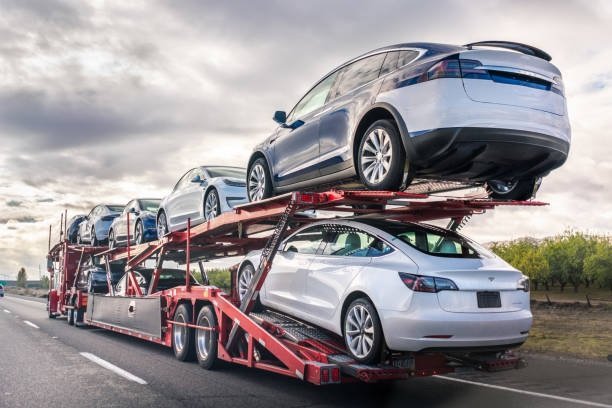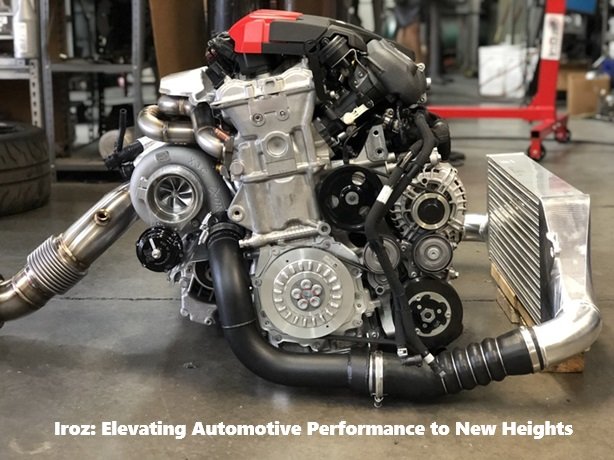The global automotive market is undergoing a seismic shift, driven by the rapid rise of electric vehicles (EVs). Once a niche segment, EVs are now at the forefront of the automotive industry, challenging the dominance of traditional internal combustion engine (ICE) vehicles. This transformation is reshaping the industry landscape, influencing everything from consumer behavior and government policies to environmental sustainability and technological innovation. In this article, we explore the impact of electric vehicles on the global automotive market, examining key trends, challenges, and prospects.
The Rise of Electric Vehicles
Historical Context and Market Growth
The concept of electric vehicles is not new. The first electric cars appeared in the late 19th century, but they were quickly overshadowed by the more practical and affordable ICE vehicles. However, in recent decades, a combination of environmental concerns, technological advancements, and government incentives has rekindled interest in EVs.
The early 2000s saw the introduction of hybrid vehicles, like the Toyota Prius, which paved the way for fully electric cars. Tesla’s launch of the Roadster in 2008 marked a turning point, proving that EVs could be both high-performing and desirable. Since then, the EV market has grown exponentially. In 2023, global EV sales reached approximately 14 million units, up from just 450,000 in 2015. This growth is expected to continue, with EVs projected to account for 30% of all vehicle sales by 2030.
Factors Driving EV Adoption
Several factors are driving the rapid adoption of electric vehicles:
- Environmental Concerns: Climate change and air pollution are significant drivers behind the shift to EVs. Traditional ICE vehicles are major contributors to greenhouse gas emissions, prompting governments and consumers to seek cleaner alternatives. EVs, which produce zero tailpipe emissions, are seen as a key solution to reducing the automotive industry’s carbon footprint.
- Government Policies and Incentives: Many governments worldwide are implementing policies to encourage the adoption of EVs. These include subsidies, tax incentives, and grants for EV buyers, as well as investments in charging infrastructure. Some countries have also set ambitious targets to phase out the sale of new ICE vehicles entirely by a specific date, further accelerating the shift to electric mobility.
- Technological Advancements: Advances in battery technology have significantly improved the range, performance, and affordability of EVs. Lithium-ion batteries, the most common type used in EVs, have seen substantial improvements in energy density and cost reduction. This has made EVs more competitive with ICE vehicles in terms of price and practicality.
- Consumer Awareness and Demand: As awareness of environmental issues grows, more consumers are opting for electric vehicles. EVs are also becoming increasingly popular due to their lower operating costs, quiet operation, and innovative features such as autonomous driving and connectivity.
Impact on the Automotive Industry
Disruption of Traditional Automakers
The rise of electric vehicles is disrupting the traditional automotive industry, challenging established automakers to adapt or risk becoming obsolete. Companies like Tesla, which started as a pure EV manufacturer, have gained significant market share and are now among the most valuable car companies in the world. This has put pressure on legacy automakers like Ford, General Motors, and Volkswagen to accelerate their EV strategies.
Traditional automakers are investing billions of dollars in EV development and production. For instance, Volkswagen has committed to spending $100 billion on electrification by 2030, aiming to produce 70% of its European sales as electric by that time. Similarly, General Motors has announced plans to become an all-electric car company by 2035.
However, this transition is not without challenges. Automakers must navigate complex supply chains, secure raw materials for batteries, and retool their manufacturing processes. The shift to EVs also requires significant investments in research and development, which can strain financial resources, especially for companies still heavily reliant on ICE vehicle sales.
Emergence of New Players
The EV revolution has also opened the door for new entrants to the automotive market. Startups like Rivian, Lucid Motors, and NIO are challenging established players with innovative designs and cutting-edge technology. These companies are often more agile than traditional automakers, allowing them to quickly bring new models to market and capture consumer interest.
The rise of EVs has also attracted interest from tech giants like Apple and Google, which are reportedly exploring opportunities in electric and autonomous vehicles. The convergence of the automotive and technology sectors is creating a new competitive landscape, where software and data are becoming as important as hardware.
Changes in Supply Chain and Manufacturing
The shift to electric vehicles is transforming the automotive supply chain. Unlike ICE vehicles, which rely on complex engines with thousands of moving parts, EVs have simpler powertrains with fewer components. This reduces the need for traditional suppliers of engine parts while increasing demand for batteries, electric motors, and electronics.
Battery manufacturing, in particular, is becoming a critical aspect of the EV supply chain. Companies are investing in battery production facilities, known as gigafactories, to meet the growing demand. The sourcing of raw materials like lithium, cobalt, and nickel, essential for battery production, is also becoming a strategic priority, with concerns about supply shortages and geopolitical risks.
Impact on Dealerships and Aftermarket Services
The rise of electric vehicles is also impacting Global Automotive dealerships and aftermarket services. EVs require less maintenance than ICE vehicles, as they have fewer moving parts and do not need oil changes or exhaust system repairs. This could lead to a decline in revenue for dealerships and service centers that rely on maintenance and repairs as a significant income source.
Dealerships are also facing the challenge of adapting to the new sales model for EVs. Tesla, for example, has disrupted the traditional dealership model by selling directly to consumers online, bypassing franchised dealers. This has prompted some traditional automakers to explore direct-to-consumer sales channels for their EV offerings.
Environmental and Social Impact
Reduction in Greenhouse Gas Emissions
One of the most significant impacts of electric vehicles is their potential to reduce greenhouse gas emissions. According to the International Energy Agency (IEA), EVs saved over 500 million tons of CO2 emissions globally in 2022, equivalent to the annual emissions of France. As more countries adopt EVs, the reduction in emissions is expected to accelerate, contributing to Global Automotive’s efforts to combat climate change.
However, the environmental benefits of EVs depend on the energy sources used to charge them. In regions where electricity is generated from renewable sources like wind, solar, or hydro, the carbon footprint of EVs is significantly lower than that of ICE vehicles. Conversely, in areas where coal or other fossil fuels dominate electricity generation, the environmental benefits of EVs are less pronounced.
Job Creation and Economic Impact
The transition to electric vehicles is also creating new economic opportunities and jobs. The growth of the EV market is driving demand for skilled workers in areas such as battery manufacturing, software development, and charging infrastructure. According to a report by the World Economic Forum, the shift to electric mobility could create over 10 million jobs worldwide by 2030.
However, the transition also poses challenges for workers in traditional automotive sectors. Jobs related to ICE vehicle manufacturing, such as engine and transmission assembly, may decline as automakers shift production to electric models. This underscores the need for workforce retraining and reskilling programs to help workers transition to new roles in the evolving automotive industry.
Impact on Energy Demand and Infrastructure
The widespread adoption of electric vehicles is expected to have a significant impact on energy demand and infrastructure. As EVs become more common, electricity consumption will increase, requiring upgrades to power grids and the expansion of renewable energy sources to meet the demand.
Charging infrastructure is another critical area of focus. The availability of convenient and reliable charging stations is essential for the mass adoption of EVs. Governments and private companies are investing heavily in the deployment of charging networks, with a particular emphasis on fast-charging stations that can quickly recharge EV batteries.
Challenges and Future Prospects
Battery Technology and Sustainability
While the adoption of electric vehicles is accelerating, several challenges remain. One of the most significant is the development of sustainable and efficient battery technology. Current lithium-ion batteries have limitations in terms of energy density, cost, and environmental impact. Research is ongoing into alternative battery technologies, such as solid-state batteries, which promise to offer higher energy density, faster charging times, and greater safety.
The environmental impact of battery production and disposal is another concern. Mining for battery raw materials, such as lithium and cobalt, can have significant environmental and social consequences. The automotive industry is exploring ways to reduce the environmental footprint of batteries, including recycling initiatives and the development of more sustainable mining practices.
Market Competition and Innovation
The competition in the EV market is intensifying as more automakers enter the fray. This is driving innovation and leading to the development of a wide range of electric vehicles, from affordable mass-market models to high-performance luxury cars. As competition increases, consumers are likely to benefit from more choices, improved technology, and lower prices.
Global Automotive Adoption and Market Dynamics
The pace of EV adoption varies significantly across different regions. While countries like Norway and China are leading the way in EV adoption, other regions, particularly in developing countries, are lagging due to factors such as cost, infrastructure, and policy support. The global automotive market will likely experience uneven growth in EV adoption, with some regions transitioning more quickly than others.
Conclusion
The impact of electric vehicles on the global automotive market is profound and far-reaching. As EVs continue to gain traction, they are reshaping the industry, driving innovation, and contributing to a more sustainable future. While challenges remain, the momentum behind electric vehicles shows no signs of slowing down. The next decade will be crucial in determining how the Global Automotive industry evolves, with electric vehicles playing a central role in shaping the future of mobility.
Also. Read About. AWD vs. RWD: Which is the Best Drivetrain for You?




